| All photographs by Ken R. Noffsinger unless otherwise noted. |
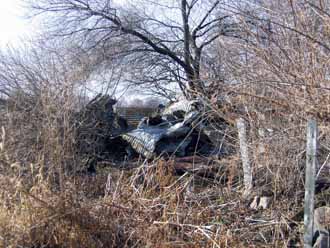 1
1
|
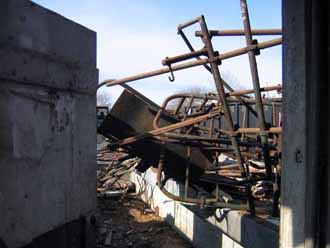 2
2
|
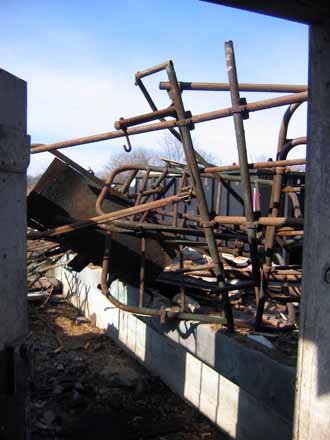 3
3
|
|
The South Grain Storage bin after being smashed and shredded by an excavator. This photograph is looking southeast.
|
Photographs two and three look west into what was the milking parlor area. Coppock family members report that this was the second "modern" milking parlor
in the county.
|
|
|
|
|
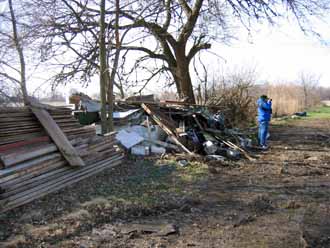 4
4
|
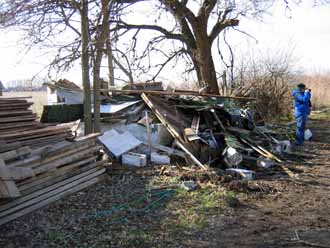 5
5
|
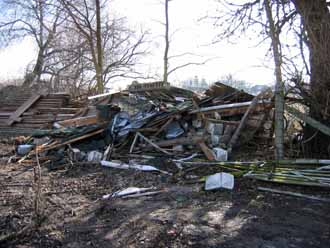 6
6
|
|
Images four through seven look southeast to south and show the debris in and around the Milk House area. Jim Gumbert is seen
in photos four and five with his camera.
|
|
|
|
|
|
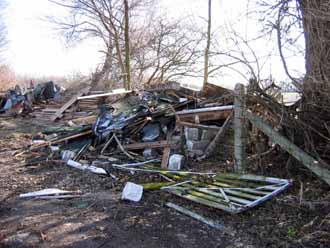 7
7
|
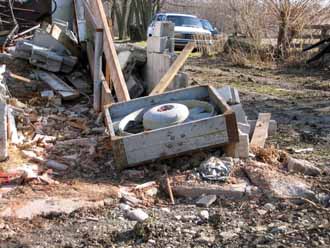 8
8
|
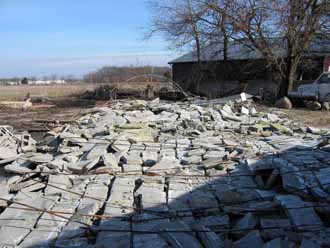 9
9
|
|
|
The box in the foreground is the frame of a large fan that was mounted in the South Grain Storage bin.
It was used to circulate air, which would dry the grain to prevent spoilage.
|
The 1956 Silo is seen in photographs nine through twelve, just as it ended up after it fell. A hollow tube made of
relatively thin cement bricks, its remnants formed a very distinct patchwork column on the ground. These photographs look to the northeast.
|
|
|
|
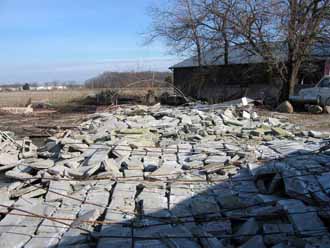 10
10
|
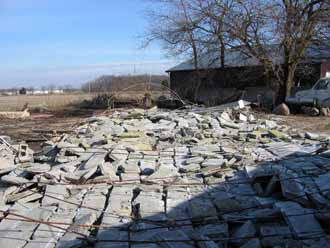 11
11
|
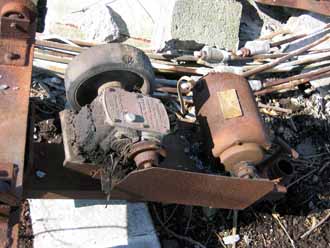 12
12
|
|
|
|
The 1956 Silo had a sheet metal trough completely surrounding it, from which cattle would
feed. This trough was on rollers and could rotate around the base of the silo, making it much easier for the person moving silage from the silo into the trough. The person
could remain in one place while moving silage into the trough as it rotated, rather than having to carry silage around the trough to unload it. The electric motor in photographs
twelve through fourteen powered this rotating trough.
|
|
|
|
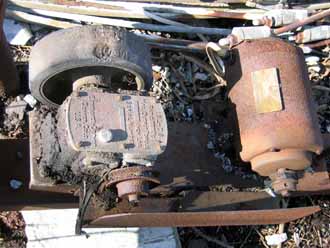 13
13
|
|
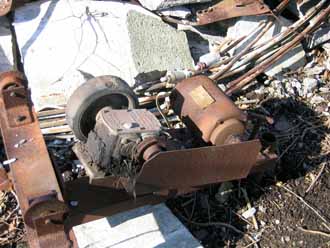 14
14
|
![[1906 - The Coppock Barn, Monroe Township, Miami County, Ohio]](images/index/CoppockBarnMasthead2.jpg)
![[1906 - The Coppock Barn, Monroe Township, Miami County, Ohio]](images/index/CoppockBarnMasthead2.jpg)
 1
1
 2
2
 3
3
 4
4
 5
5
 6
6
 7
7
 8
8
 9
9
 10
10
 11
11
 12
12
 13
13
 14
14